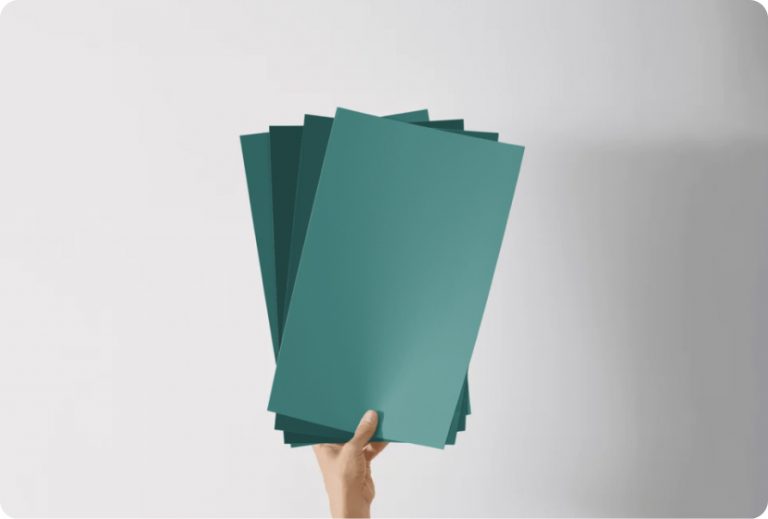Imagine the perfect backdrop for your cozy and welcoming home. I stumbled upon HC-113 Louisburg Green by Benjamin Moore, and it might just be the hue you’ve been searching for. This color is a deep, soothing green that feels both rich and earthy, perfect for creating a calm environment.
Whether you’re looking to paint a focal wall or refresh the look of an entire room, Louisburg Green provides a balanced and refreshing palette that is surprisingly adaptable. This shade pairs beautifully with natural woods, subtle creams, or rich browns, offering options for traditional and modern styles alike.
You’ll find that it works wonderfully in rooms that crave a touch of nature’s calmness, enhancing the area without overpowering it. From a practical standpoint, this paint offers great coverage and durability, making it as sensible as it is beautiful.
So, if you’re ready to bring some new life into your home with a color that’s both unique and classic, Louisburg Green might just be your new go-to.
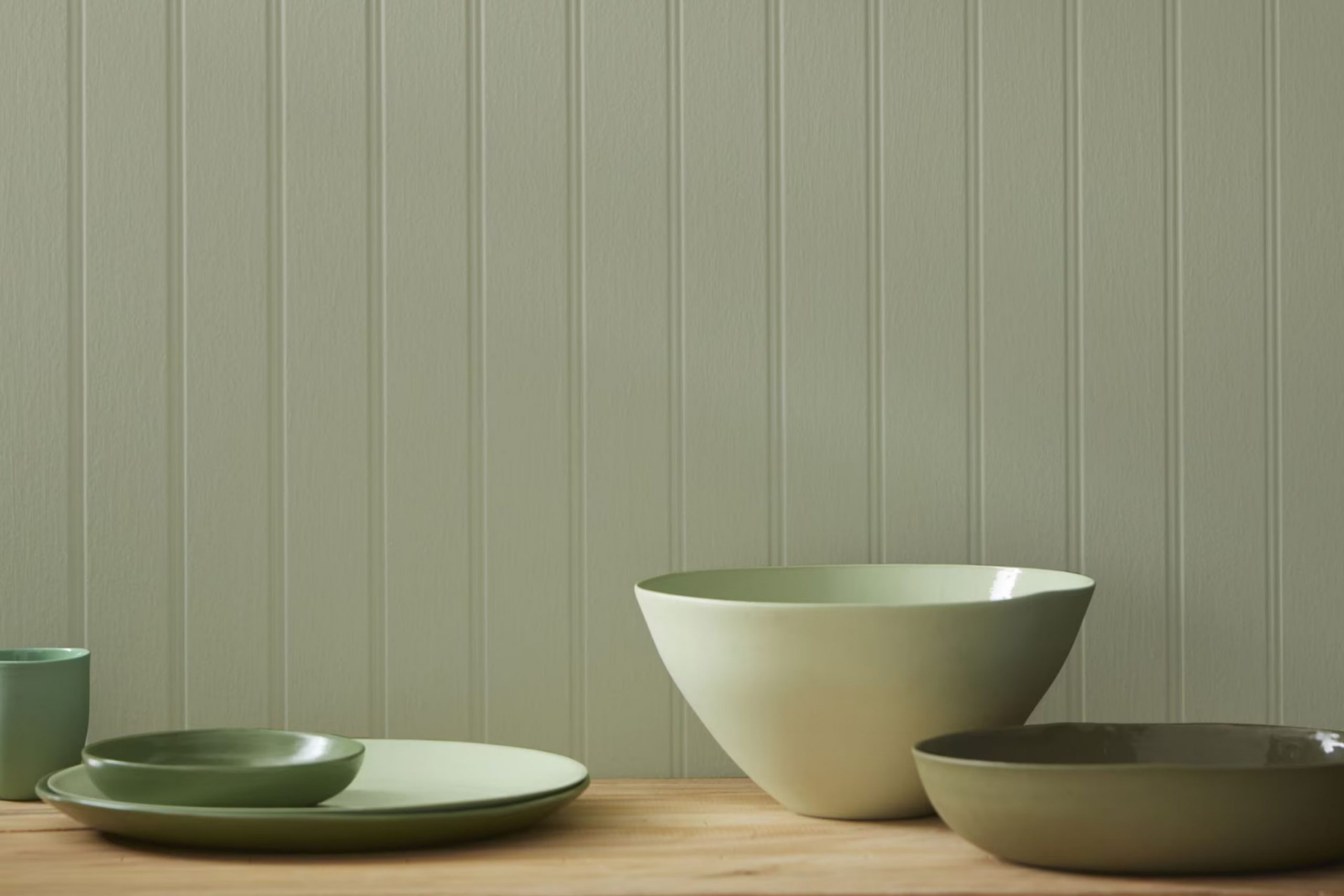
What Color Is Louisburg Green HC-113 by Benjamin Moore?
Louisburg Green HC-113 by Benjamin Moore is a rich, deep green hue that brings a touch of nature indoors. Its earthy tones are adaptable and work well in a variety of interior styles, particularly those that lean towards traditional or rustic vibes.
This shade is particularly effective in rooms that aim to have a cozy, inviting atmosphere, such as living rooms, libraries, or bedrooms. Louisburg Green pairs beautifully with natural materials like wood, enhancing the grain and texture of wooden furniture and flooring with its deep, lush backdrop. It also complements leather well, adding an element of warmth and comfort when combined with leather sofas or chairs.
For a refreshing contrast, coupling this green with lighter fabrics or elements, such as creamy linens or soft beige curtains, can really make the room feel balanced and well-thought-out. This color works excellently in styles like Colonial, Craftsman, and English country, where its ability to act as a neutral yet impactful tone can be fully utilized.
It helps to ground the decor and serves as a stunning canvas to layers of texture like woven rugs, chunky throws, and brass or copper accents. Overall, Louisburg Green is an adaptable choice that harmonizes with a wide range of textures and materials, making any room feel more welcoming and connected to the outdoors.
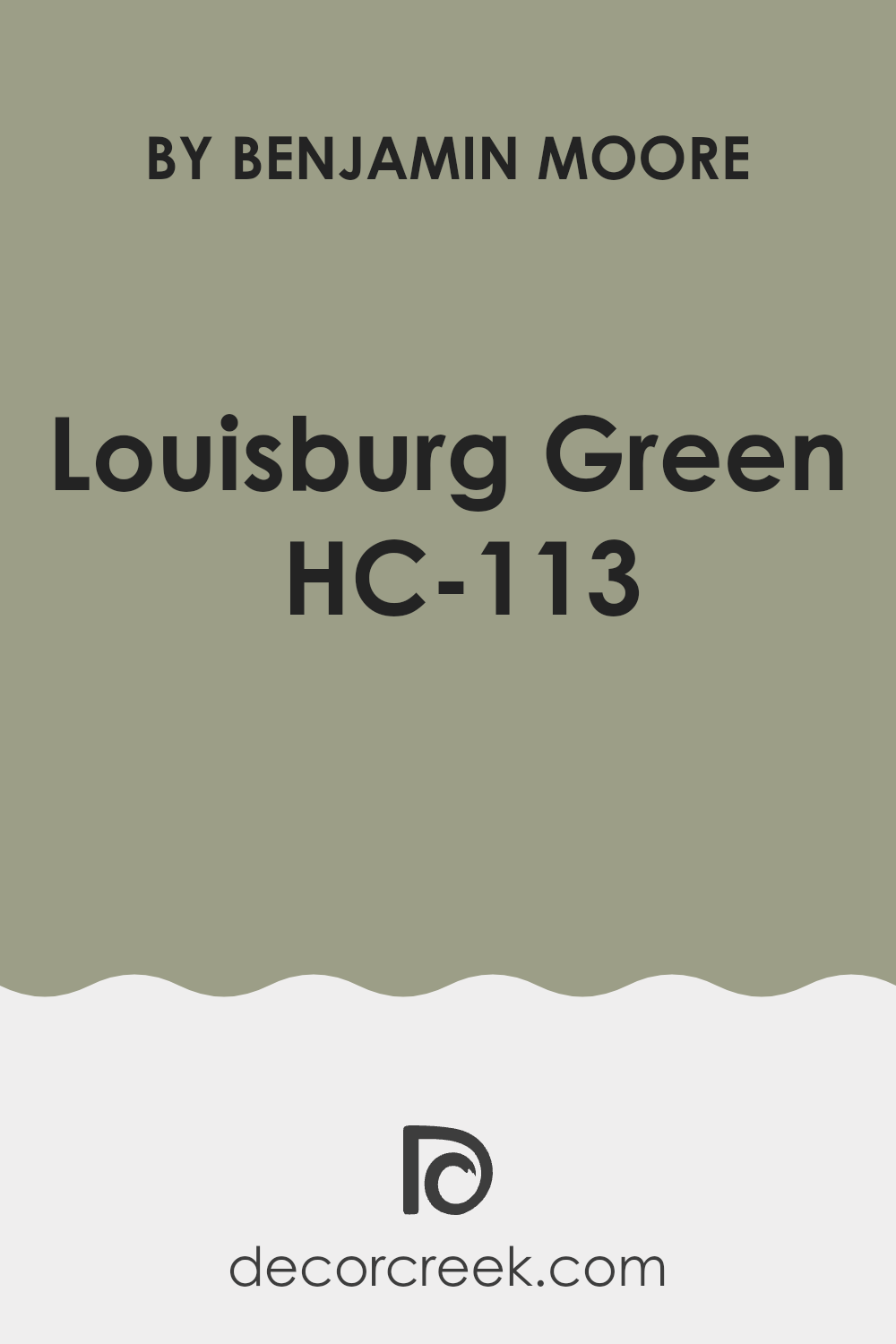
Is Louisburg Green HC-113 by Benjamin Moore Warm or Cool color?
Louisburg Green HC-113 by Benjamin Moore is a unique shade of green that brings a fresh and natural vibe to any room. This color has a subtle richness that makes rooms feel cozy yet lively. It works well in homes because it pairs beautifully with various decor styles, from rustic to modern.
For instance, in a living room, it can act as a calming backdrop that highlights wooden furniture and natural elements. In a kitchen, this shade can add a touch of brightness, especially when paired with white cabinets and stainless steel appliances.
The adaptability of Louisburg Green also makes it a great choice for exterior use, adding charm to a home’s facade. The color is not too intense, making it suitable for large areas as a primary color or small rooms as an accent. Overall, this shade helps create a welcoming atmosphere that is both stylish and comfortable.
Undertones of Louisburg Green HC-113 by Benjamin Moore
Benjamin Moore’s Louisburg Green is a unique color that brings a subtle yet distinct influence to any room, thanks in large part to its complex undertones. At its core, it appears as a depth-filled green, but the addition of many undertones adds layers of perception to its appearance.
Undertones are those secondary colors that lurk beneath the surface of the primary color, impacting how the color appears under different lighting conditions and when placed next to other colors. For instance, undertones like mint and light green bring a freshness to Louisburg Green, making it feel more lively and vibrant. On the other hand, shades like olive and dark green deepen the hue, lending it an earthy, rooted vibe.
When applied to interior walls, Louisburg Green can create different moods depending on its environment. In a well-lit room, the lighter undertones such as pale yellow and light gray might make the area feel more open and airy. In contrast, in a room with less natural light, the darker undertones like dark green and olive might make the area feel more enclosed and cozy.
Moreover, smaller amounts of unexpected undertones like pale pink and lilac can influence how the color interacts with furnishings and décor. For example, placing fabrics or elements with hints of pink or lilac near Louisburg Green walls could unexpectedly draw out these undertones, resulting in a subtle yet attractive play of colors.
Understanding the undertones in a paint like Louisburg Green can greatly aid in selecting complementary colors and décor, ensuring that the whole room comes together in a harmonious way. This approach to selecting paint goes beyond just picking a color; it involves considering how that color will behave in real-world conditions, adding to the overall aesthetic of your room.
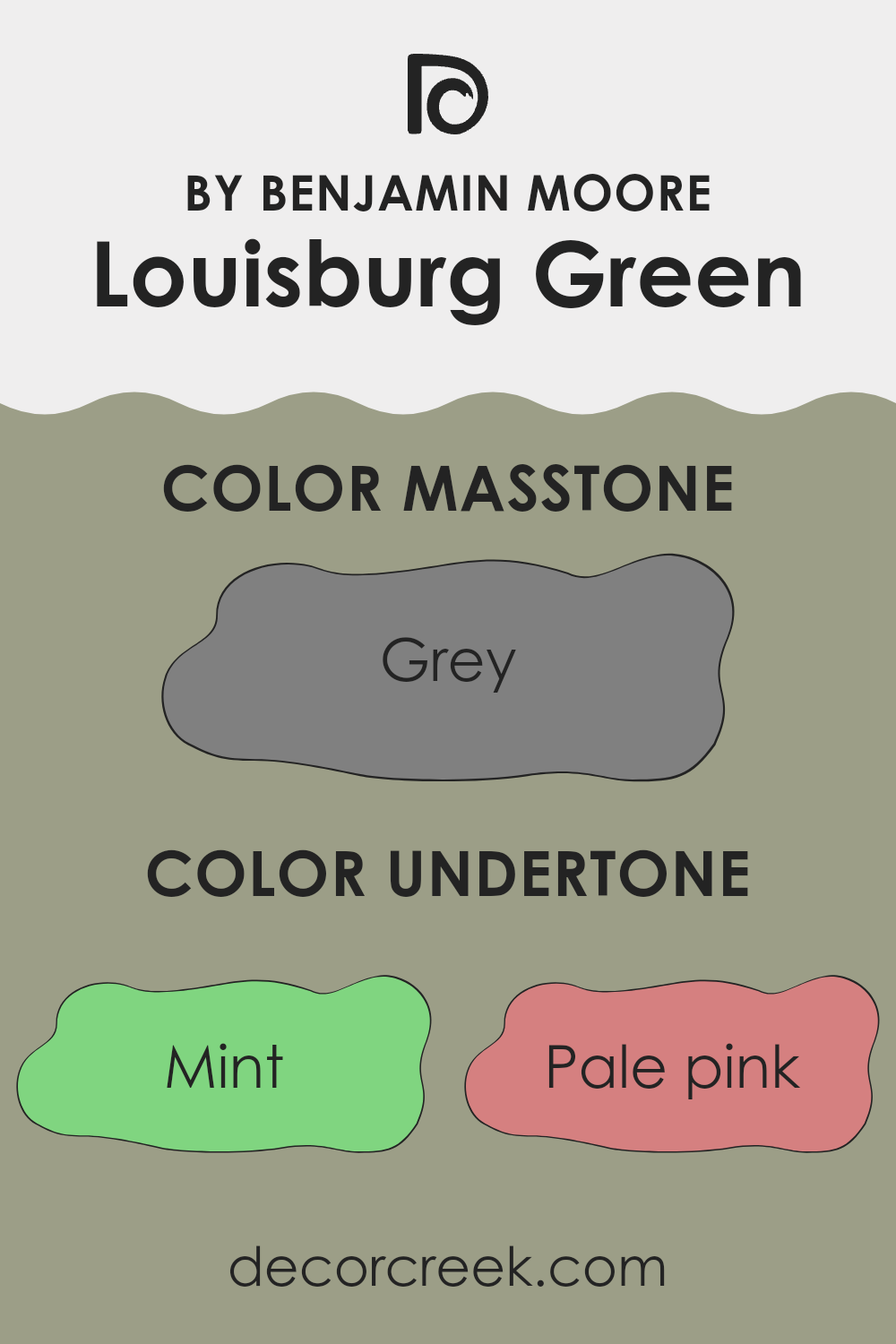
What is the Masstone of the Louisburg Green HC-113 by Benjamin Moore?
Louisburg Green HC-113 by Benjamin Moore has a masstone of grey, represented by the color code #808080. This grey base makes it an adaptable choice for home interiors. When used in different rooms, it adds a subtle depth without overpowering the area.
Its neutrality helps harmonize with various furnishings, allowing for flexible decor choices. Whether in a living room, bedroom, or kitchen, the grey undertones in this paint offer a stable backdrop that complements both bright and soft color schemes, making it easy to match with your existing home style.
This makes it a great pick for those looking to bring in a new color without major redesigns. It also provides a calming effect, keeping the atmosphere pleasant and grounded, which is perfect for creating a cozy home setting.
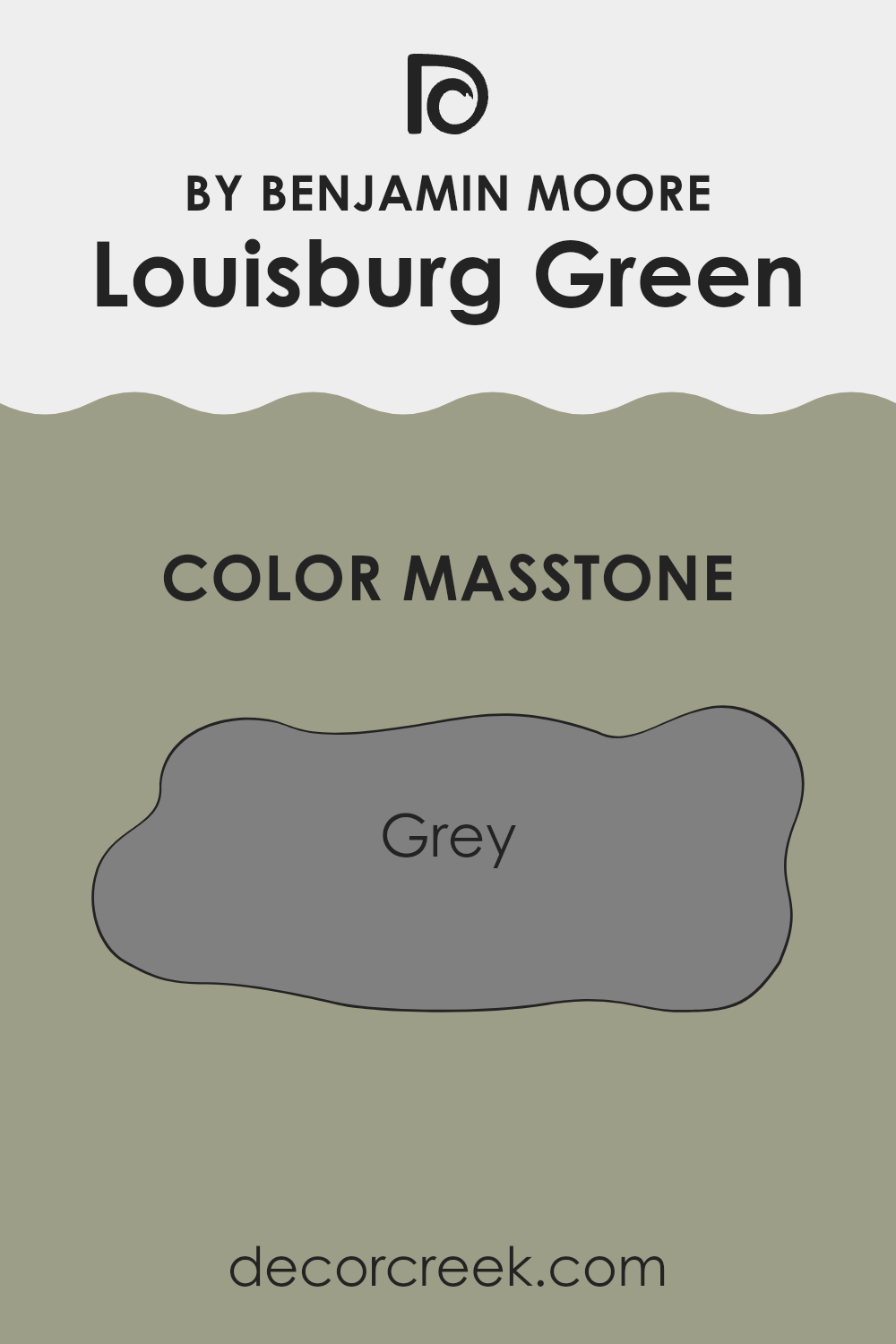
How Does Lighting Affect Louisburg Green HC-113 by Benjamin Moore?
Lighting plays a crucial role in how colors appear in different environments. The perception of color can dramatically change depending on the light source, be it natural sunlight or artificial lighting.
Take the color Louisburg Green from Benjamin Moore, for instance. Under artificial light, such as LED or incandescent bulbs, the green can appear richer and deeper, often enhancing the cozy and warm feel of indoor rooms. This is because artificial lighting, especially warmer tones like yellow and soft white, can bring out the earthy tones in the color.
In natural light, Louisburg Green can look quite different. Daylight can reveal more of the true nature of the color, showing its depth without overshadowing its underlying blue-green tones. This means that the color can appear slightly brighter and more vibrant during the day compared to under artificial lighting.
Now, when considering different room orientations, this color can have varying effects:
- North-facing rooms: These rooms usually get less sunlight, which can make any color look somewhat dull. Louisburg Green in a north-facing room can seem more shadowy and subdued, potentially needing good artificial lighting to bring out its beauty.
- South-facing rooms: These rooms receive a lot of sunlight, which means Louisburg Green might glow bright and lively throughout the day. The natural light brings out the vibrant character of the green, making it appear lively and fresh.
- East-facing rooms: The morning light in these rooms can make Louisburg Green look very cheerful and bright in the morning, fading to a softer and more muted green toward the evening as the natural light diminishes.
- West-facing rooms: In these rooms, the color will start off more muted in the morning but gain intensity towards the evening. As the sun sets, the warm tones of the light can make Louisburg Green look more intense and rich.
Understanding these nuances can help in choosing the right colors for your room based on the light exposure, ensuring that the hues look great at any time of the day.
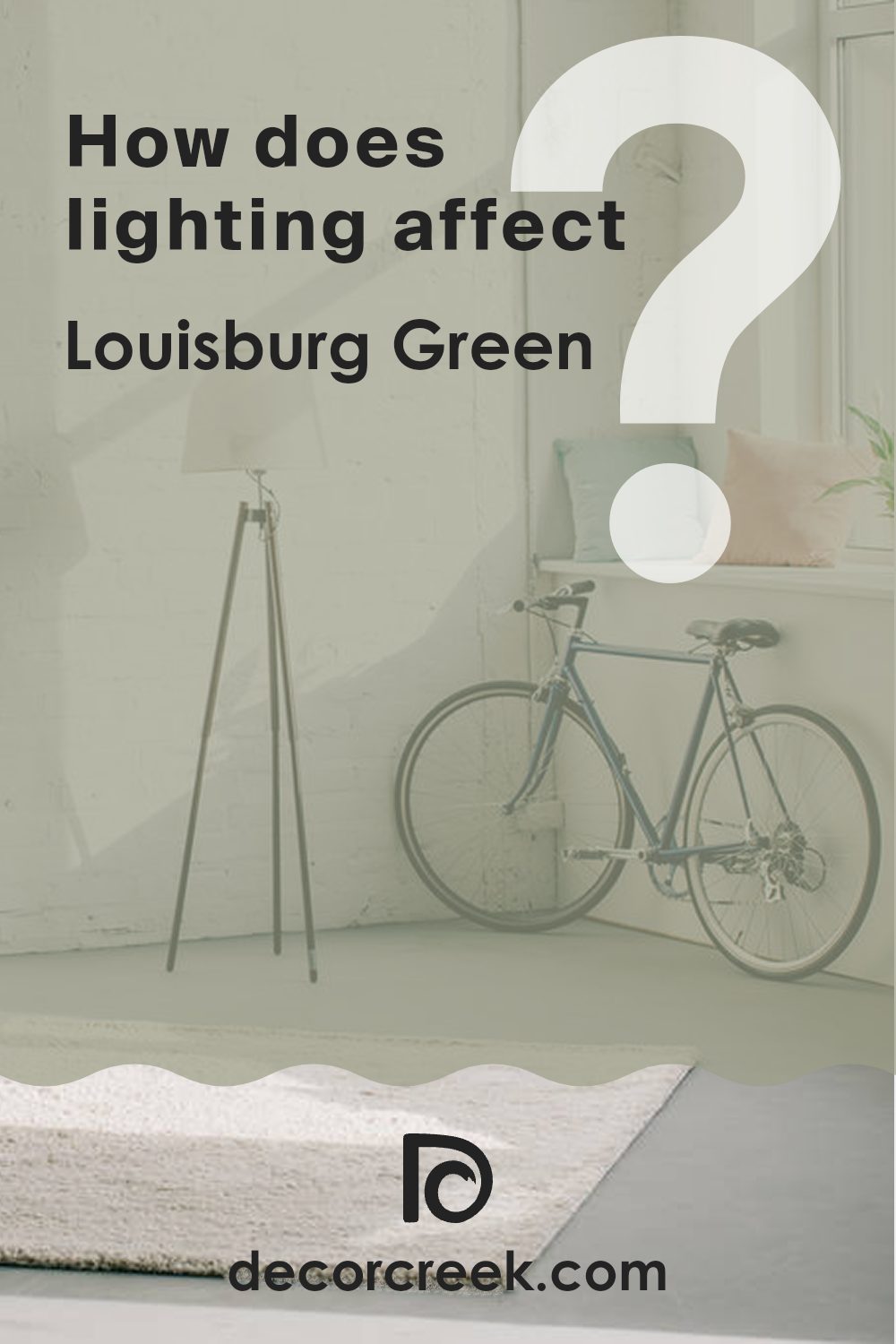
What is the LRV of Louisburg Green HC-113 by Benjamin Moore?
LRV stands for Light Reflectance Value, and it’s a measure of how much light a paint color reflects. Think of it as a scale from 1 to 100, where the higher the number, the more light that paint reflects back into the room. Lighter colors might have higher LRVs and make rooms feel brighter because they reflect more light. Darker colors, on the other hand, absorb more light, making rooms appear cozier but potentially dimmer because they have lower LRVs.
Regarding the LRV of 33.79 for the color in question, this places it in a mid-range category where it’s not too dark but not particularly light either. This means it won’t brighten up a room as much as a color with a higher LRV might, but it’s also not so dark that it will make a room feel cramped or overly shadowy.
It strikes a balance, providing a notable degree of warmth and depth to a room without dramatically reducing the perceived light. This can be particularly effective in areas that already benefit from a fair amount of natural light, allowing the color to appear vibrant and lively.
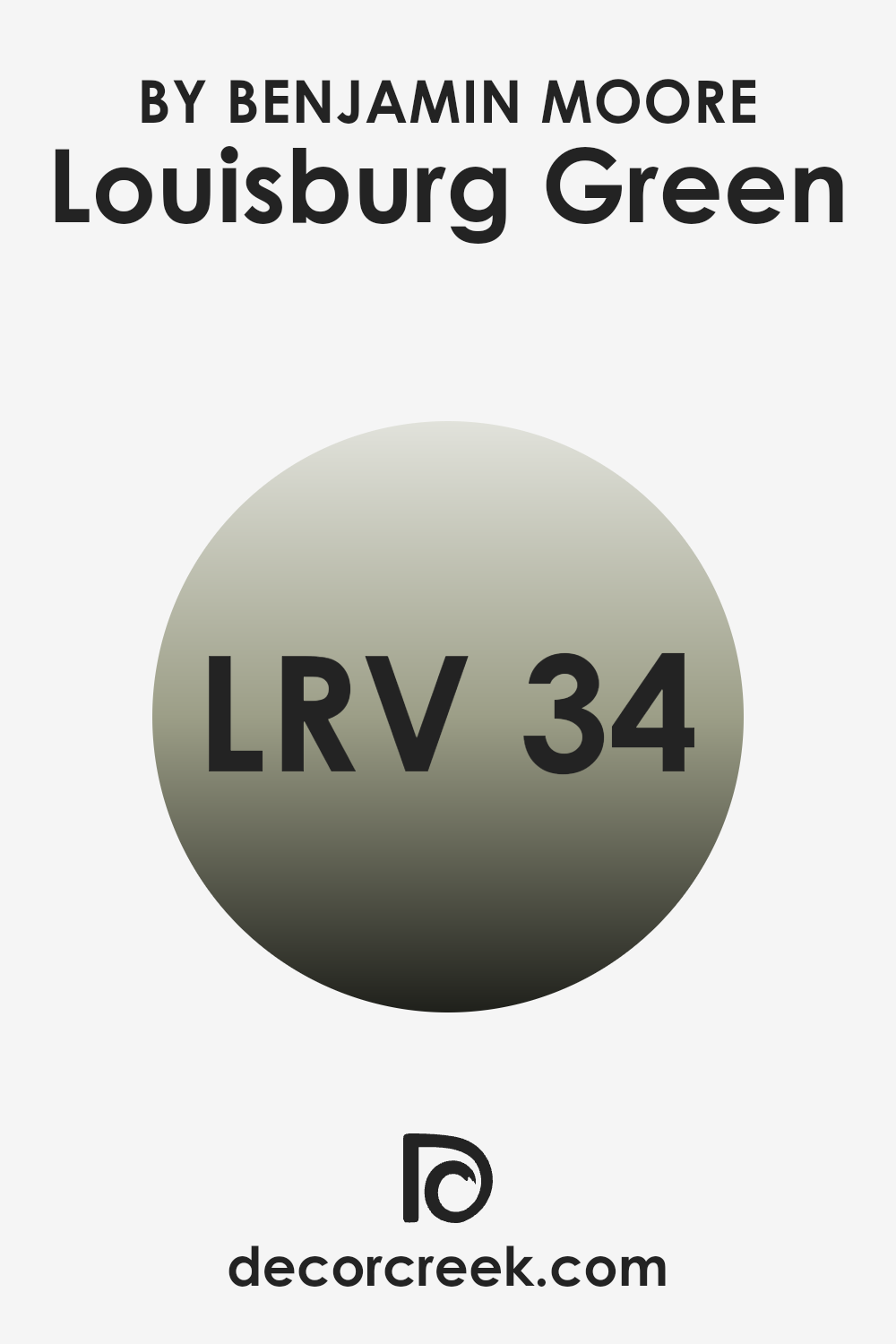
Coordinating Colors of Louisburg Green HC-113 by Benjamin Moore
Coordinating colors are selected shades that complement or enhance each other when used together in decor. These specific shades create harmonious combinations that make interiors more appealing and visually cohesive. For instance, Louisburg Green could be perfectly paired with a variety of unique colors to create a refreshing and balanced look.
Guilford Green is a subtle, soft green that introduces a light, airy feel to any room, going well with the deeper Louisburg Green for a layered green effect. Tangy Orange is vibrant and energetic, and it adds a lively pop of color that contrasts beautifully against the more muted green tones.
Lancaster Whitewash is a gentle off-white hue, offering a neutral backdrop that allows colors like Louisburg Green to stand out without overpowering the room. Lastly, Wickham Gray provides a modern, clean look with its cool gray tone, giving a soothing balance that works well with both the quiet whispers of Lancaster Whitewash and the boldness of Louisburg Green. Each of these colors interacts with Louisburg Green in a way that establishes a well-rounded and appealing color palette.
You can see recommended paint colors below:
- HC-116 Guilford Green
- 2014-30 Tangy Orange
- HC-174 Lancaster Whitewash
- HC-171 Wickham Gray
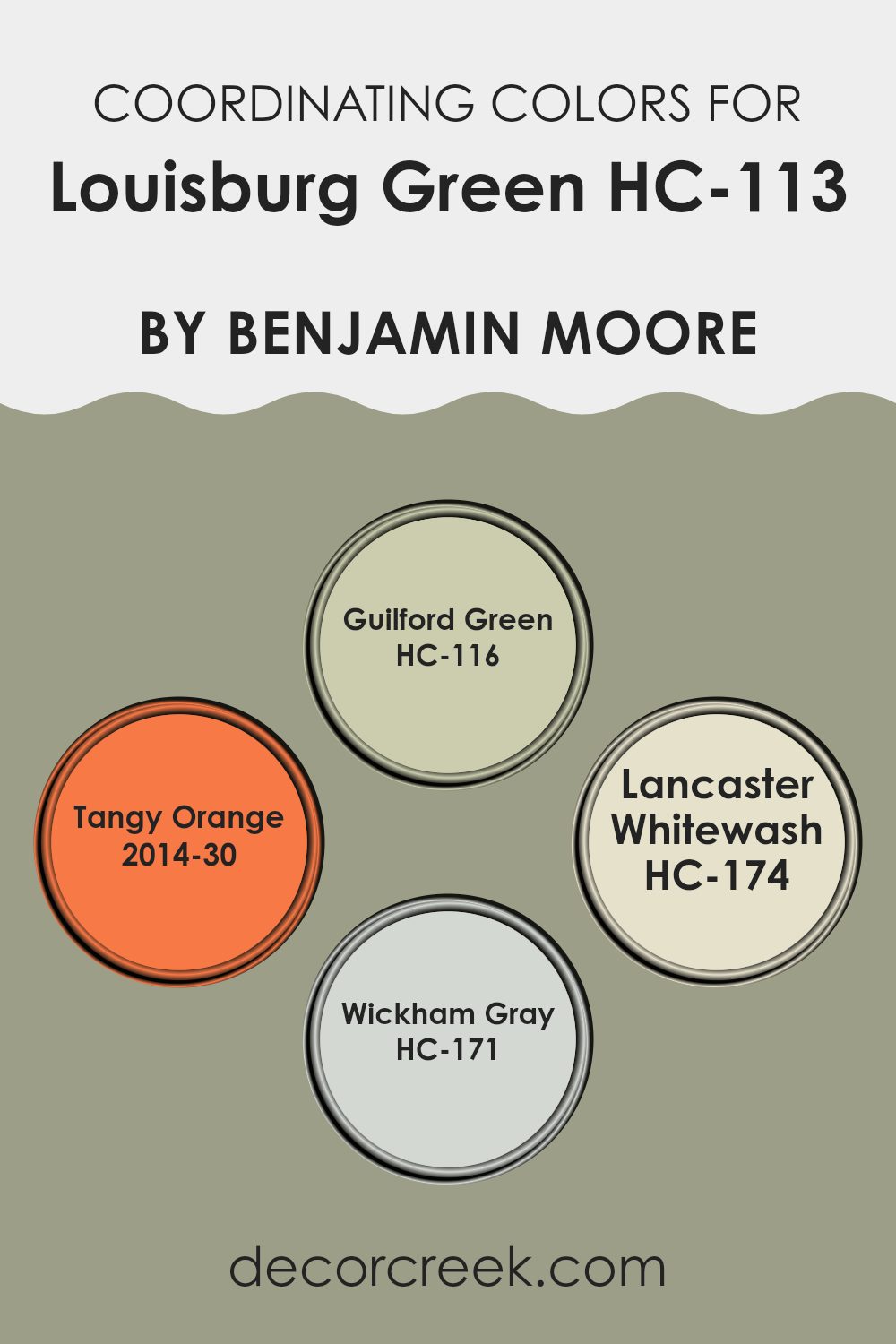
What are the Trim colors of Louisburg Green HC-113 by Benjamin Moore?
Trim colors are secondary hues applied to detailing in interior and exterior design, such as door frames, window sills, molding, and baseboards. Their main purpose is to provide a visually appealing contrast or complement to the main wall color, enhancing the overall aesthetic and balance of a room.
When paired with a rich hue like Louisburg Green by Benjamin Moore, well-chosen trim colors can accentuate the depth of the wall color, highlight architectural details, draw attention to special features, and create a clean, finished look.
For Louisburg Green, consider using trim colors like OC-146 – Linen White and OC-128 – Minced Onion. Linen White is a soft, warm white that provides a subtle contrast without overpowering the senses, making it an adaptable choice that brightens the room in a gentle manner.
Minced Onion, on the other hand, adds a hint of neutrality with its subtle grayish tone, lending an understated elegance that complements the more dominant green. This pair offers a balance that reinforces the beauty of the primary wall color while maintaining a coherent and pleasing color scheme.
You can see recommended paint colors below:
- OC-146 Linen White
- OC-128 Minced Onion
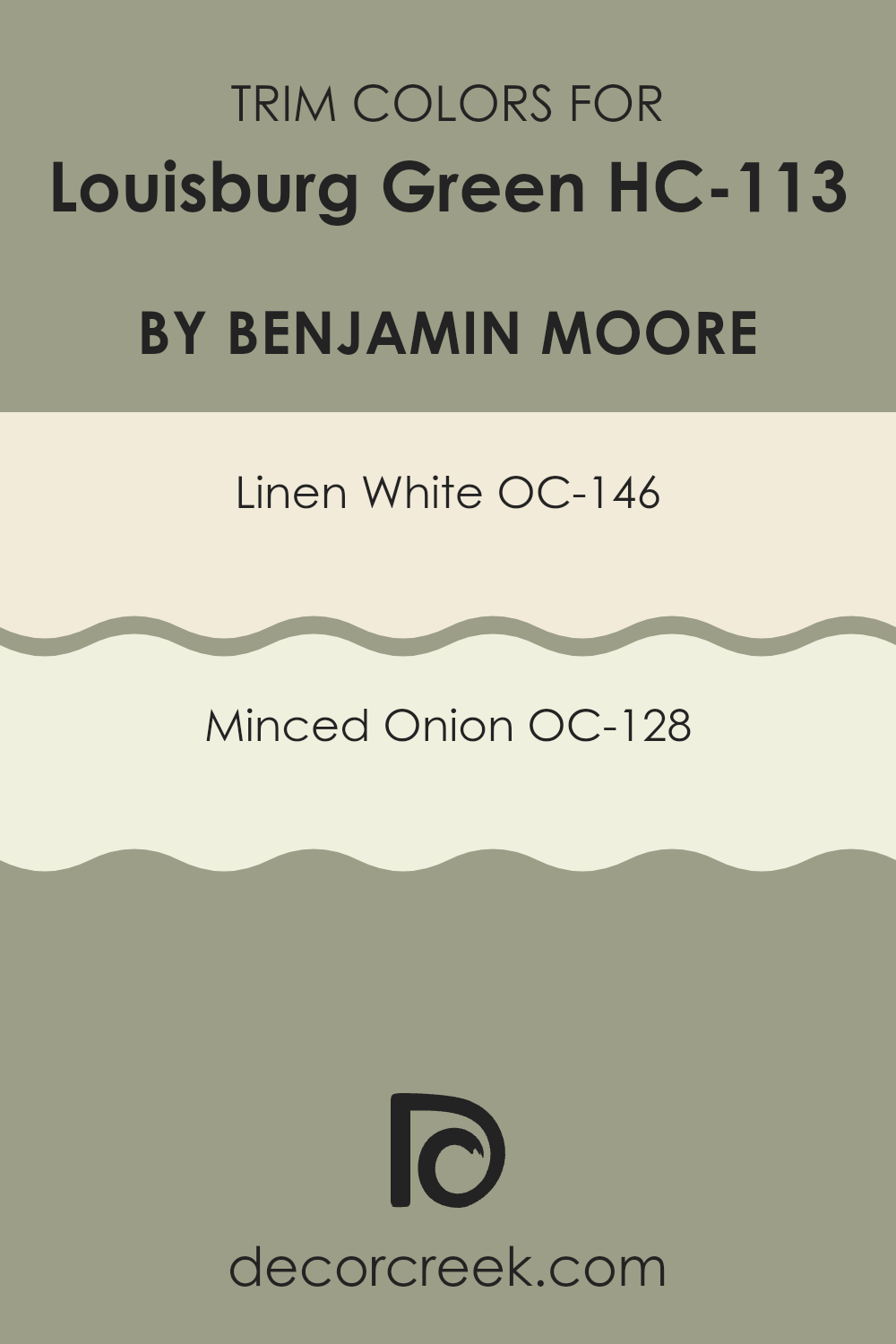
Colors Similar to Louisburg Green HC-113 by Benjamin Moore
Choosing the right palette for your home can sometimes feel intense, yet selecting similar colors can create a harmonious and cohesive look. Similar colors are those that are close to each other on the color wheel, providing a subtle contrast while maintaining a unified feel.
This effect is beautifully exhibited when using colors like Cypress Green, Raintree Green, Mistletoe, and Texas Sage, alongside Louisburg Green. Each of these tones shares a green base, yet they bring their unique qualities, making them perfect for layering and creating depth within a room.
For instance, Cypress Green exudes a hint of forest freshness that’s reminiscent of evergreen woods, perfect for rooms that aim for a natural, earthy vibe. Raintree Green, on the other hand, has a touch more gray, lending a muted yet inviting feel to rooms, evoking the softness of a rainy day.
Mistletoe offers a slightly bolder green, injecting a lively energy into the mix, which can perk up a room without overpowering it. Texas Sage merges green with silvery undertones, providing a subtle, calming influence ideal for bedrooms or quiet areas. Used together, these colors create a seamless visual experience, allowing for a room that feels both inviting and well-put-together.
You can see recommended paint colors below:
- 509 Cypress Green
- 1496 Raintree Green
- 474 Mistletoe
- 1503 Texas Sage
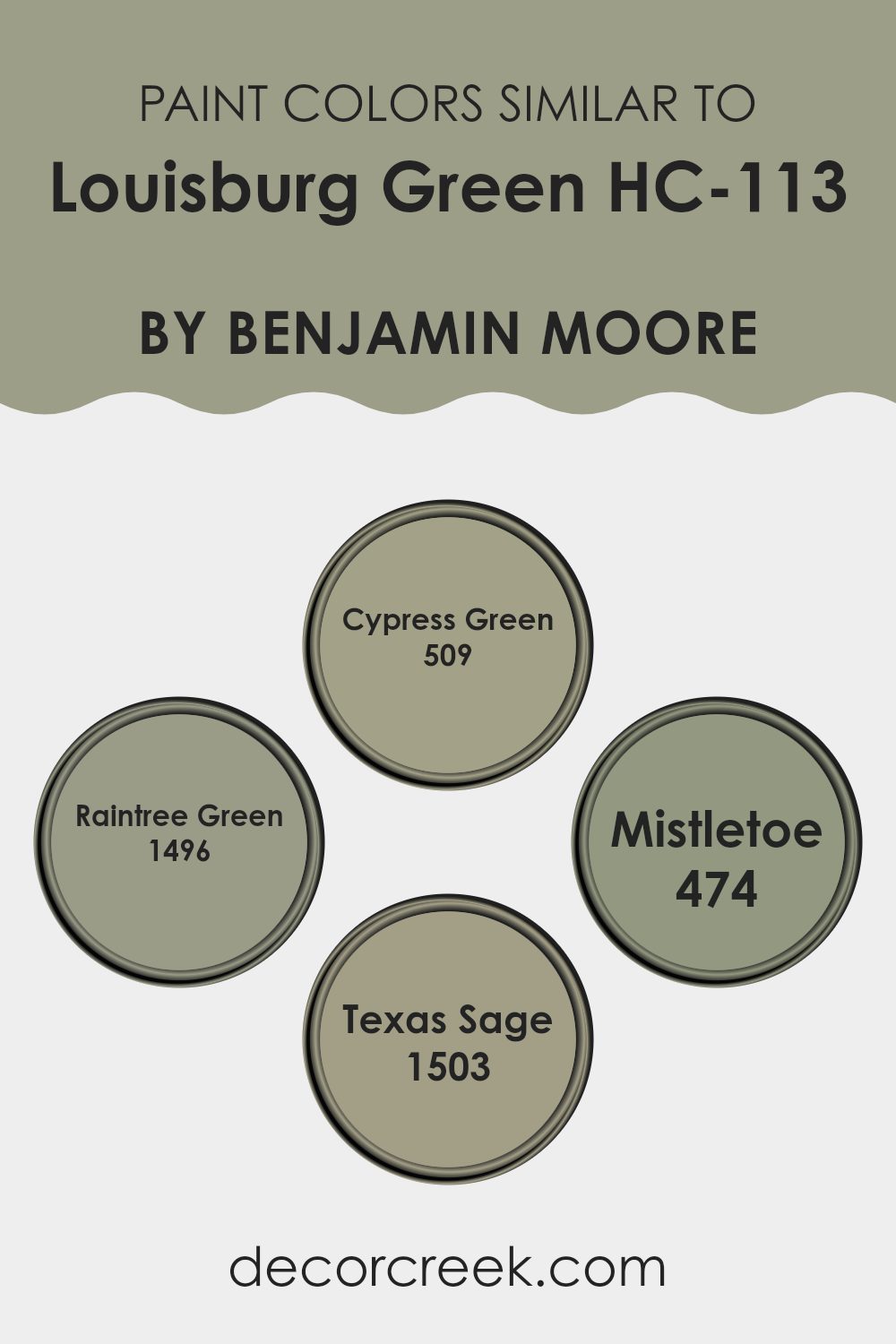
Colors that Go With Louisburg Green HC-113 by Benjamin Moore
When decorating with a distinct shade like Louisburg Green HC-113 by Benjamin Moore, choosing complementary colors is crucial to achieving a harmonious interior design. Each compatible color interacts with Louisburg Green, either by enhancing its natural tones or by providing a striking contrast that adds character to the room.
For instance, Vale Mist 1494 offers a subtle off-white with a hint of green that softens the deeper tones of Louisburg Green, creating a gentle and refreshing palette ideal for living areas and kitchens. Close in hue, Jojoba AF-460 lends a slightly yellower green, providing a seamless gradient when paired with Louisburg Green which is perfect for creating a cohesive look in open areas.
Additionally, Croquet AF-455, a muted olive, plays beautifully against the richer and darker Louisburg Green, establishing an earthy vibe that’s relaxing and easy on the eyes. For those looking for a dramatic flair, Guacamole 2144-10, with its bold, lively green, makes a statement while still resonating with the base tone of Louisburg Green.
For a softer approach, Sheep’s Wool 857 introduces a creamy, light gray that balances the boldness of Louisburg Green, ideal for creating a light and airy atmosphere. Lastly, Pine Brook 490, a deep forest green, builds on the intensity of Louisburg Green, amplifying the depth and richness of darker-themed rooms. Together, these colors complement Louisburg Green by either toning down its intensity or accentuating its depth, providing multiple styling options for various home settings.
You can see recommended paint colors below:
- 1494 Vale Mist
- AF-460 Jojoba
- AF-455 Croquet
- 2144-10 Guacamole
- 857 Sheep’s Wool
- 490 Pine Brook
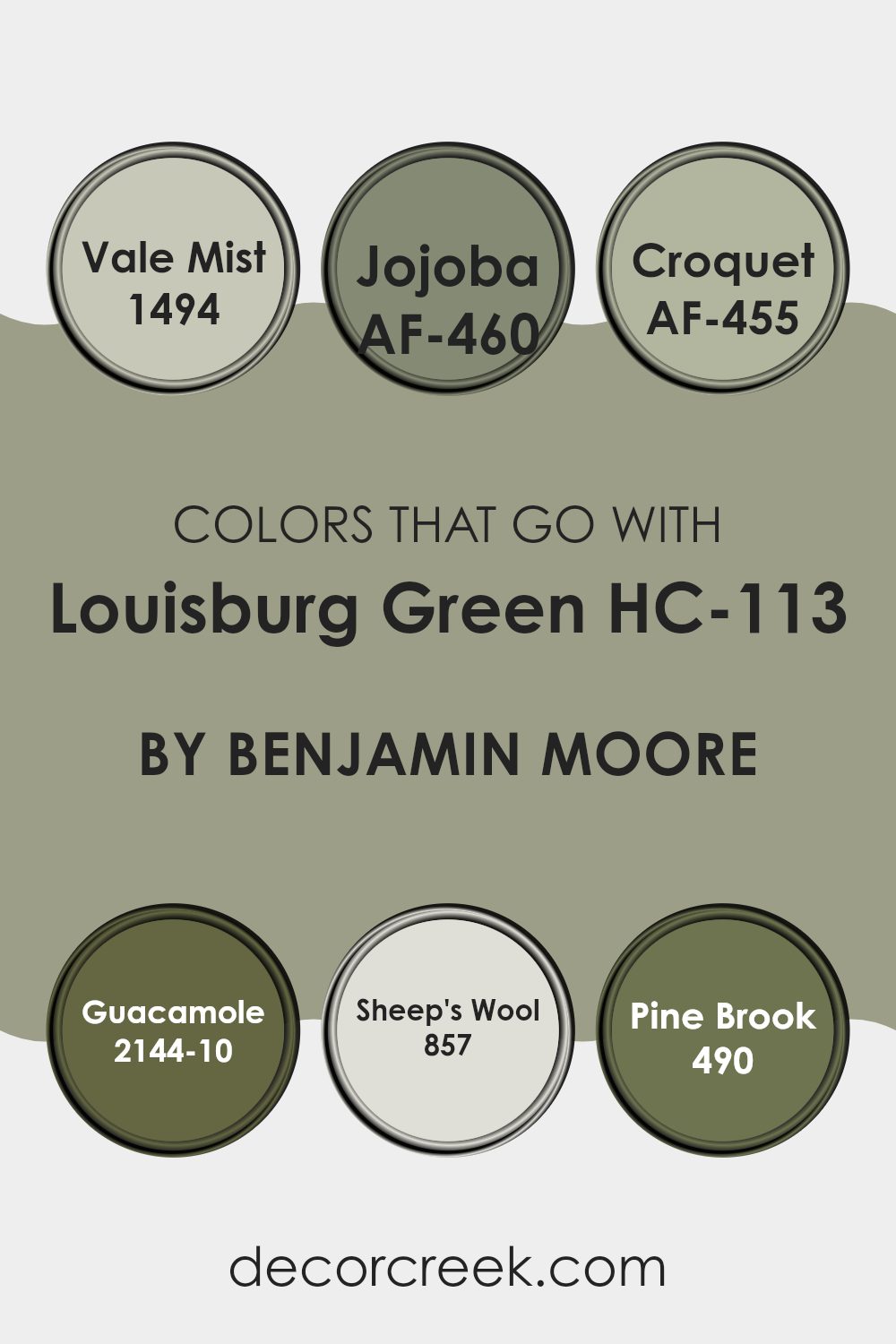
How to Use Louisburg Green HC-113 by Benjamin Moore In Your Home?
Louisburg Green HC-113 by Benjamin Moore is a rich, dark green shade that gives any room a cozy and welcoming feel. This paint works well in various parts of a house, from living areas to bedrooms, even extending its charm to kitchen cabinets for those looking for a unique touch.
Its adaptability means it complements both modern and traditional decors. If you have a larger room, using it on one accent wall can create a stylish focal point without overpowering the room. In smaller rooms, painting all walls can bring depth and warmth, making the area feel more intimate.
For those who love a bit of contrast, pairing Louisburg Green with lighter colors such as creams or soft whites on trim and other accents can make the features of the room stand out. Furniture in natural wood tones also looks fantastic against this backdrop, enhancing the room’s overall aesthetic. From a practical standpoint, darker colors like Louisburg Green are great for hiding marks and stains, making them ideal for busy areas.
Louisburg Green HC-113 by Benjamin Moore vs Mistletoe 474 by Benjamin Moore
Louisburg Green and Mistletoe by Benjamin Moore are two distinct shades of green, each with its own unique character. Louisburg Green is a deep, muted green that resembles the lush foliage of a dense forest. This color has a subtle, calm feel to it and pairs well with natural wood tones and other earthy colors.
Mistletoe, on the other hand, is lighter and more vibrant, with a freshness that mimics the lively green of spring leaves or holiday greenery. It has a more noticeable brightness that can make small rooms feel open and airy.
Even though both colors are green, Louisburg Green offers a richer, darker tone that’s excellent for creating a cozy, grounded atmosphere. Mistletoe, being livelier, is great for adding a pop of color to a room without overpowering it. Depending on the mood you want to create and the room you are working with, each color can help achieve different design goals effectively.
You can see recommended paint color below:
- 474 Mistletoe
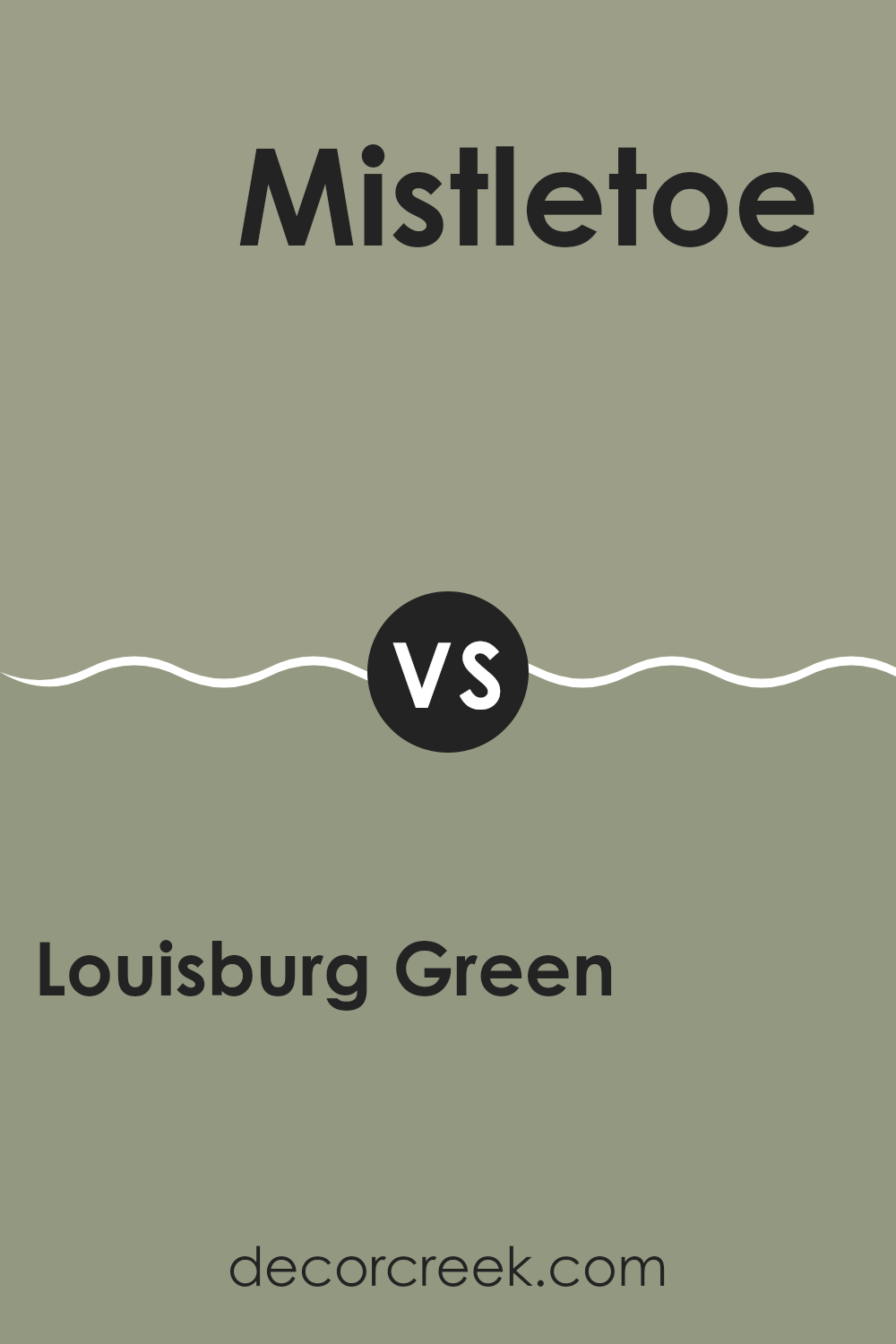
Louisburg Green HC-113 by Benjamin Moore vs Raintree Green 1496 by Benjamin Moore
The two colors, Louisburg Green and Raintree Green, are both from Benjamin Moore and offer unique shades of green. Louisburg Green presents a deep, dark green tone that leans toward a traditional look. This color can lend a cozy and somewhat formal feel to a room, making it great for areas like dining rooms or libraries.
On the other hand, Raintree Green is a bit lighter and has a fresh vibe, with a touch more yellow in its base. This makes it a good choice for brightening up a room while still keeping a natural green essence. It’s an ideal option for kitchens or sunrooms where a lighter, airy feeling is desired.
Both colors provide a natural and earthy feel, but the choice between them depends on the specific mood and brightness you want for your room. While Louisburg Green creates a more enclosed, warm atmosphere, Raintree Green offers a more open and lively setting.
You can see recommended paint color below:
- 1496 Raintree Green
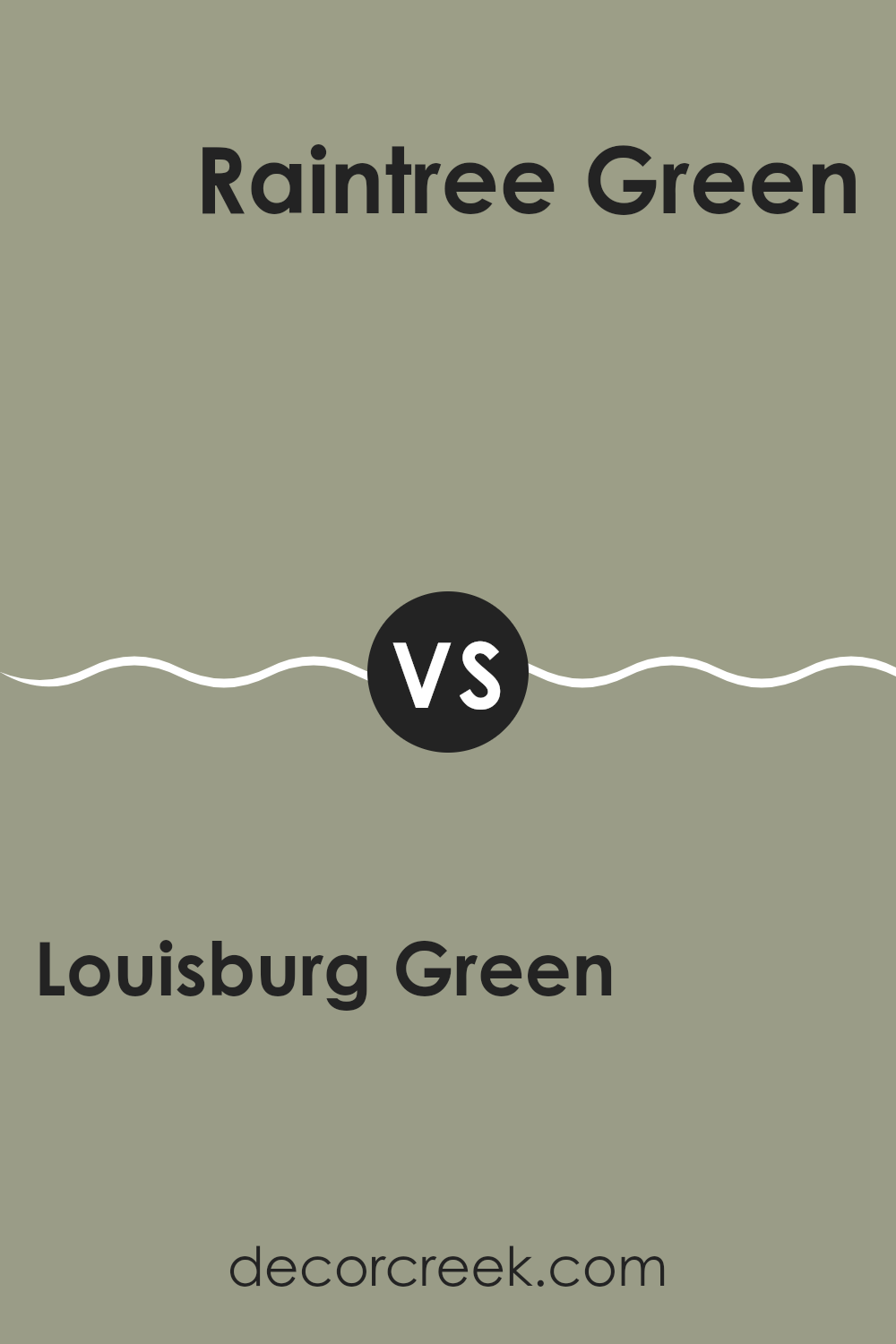
Louisburg Green HC-113 by Benjamin Moore vs Texas Sage 1503 by Benjamin Moore
Louisburg Green and Texas Sage by Benjamin Moore are both unique colors, but they each bring a different vibe. Louisburg Green is a deeper, rich green that can make a room feel cozy and enveloping. It’s great for creating a feeling of warmth and can add a traditional look when used in interiors.
On the other hand, Texas Sage is a lighter, grayish green color. This shade is more subtle and leans towards a neutral palette, making it easier to pair with various decor styles. It’s perfect for creating a calm and gentle atmosphere in a room without making too bold of a statement.
Both colors can enhance the aesthetic of a home’s interior but offer distinct tones and moods, depending on what you’re aiming for in your decorating project. Each can be used effectively to refresh different types of rooms.
You can see recommended paint color below:
- 1503 Texas Sage
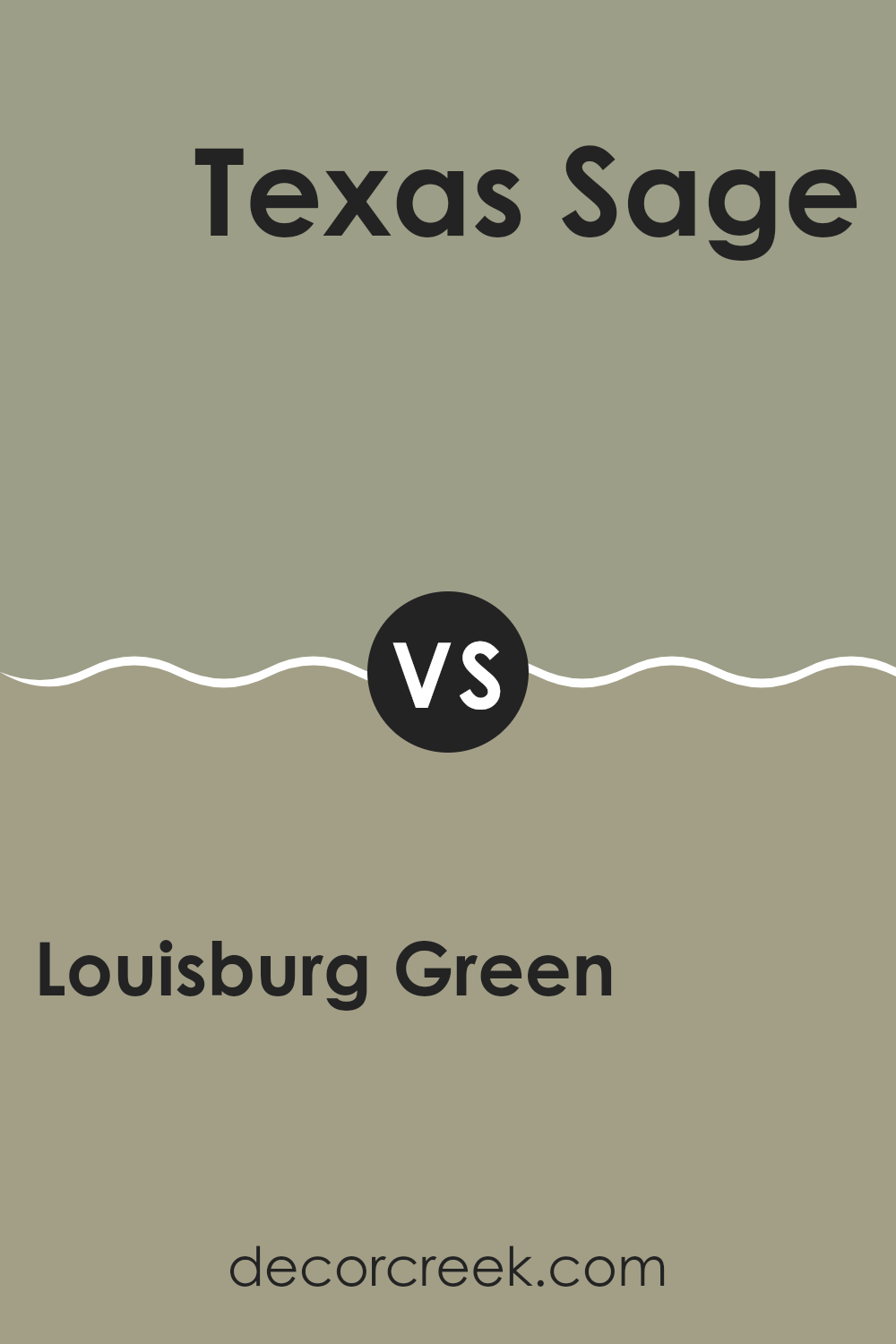
Louisburg Green HC-113 by Benjamin Moore vs Cypress Green 509 by Benjamin Moore
When looking at Louisburg Green and Cypress Green by Benjamin Moore, you’ll notice some clear differences. Louisburg Green is a darker, more traditional green which could remind you of the shade seen in rich, leafy forests. It’s a color that feels sturdy and grounded, making it great for rooms where you want to create a feeling of stability and comfort.
Cypress Green, on the other hand, has a bluer tint to it. It’s lighter than Louisburg Green, which gives it a fresher appearance. This color could make a room feel airy and light. It’s perfect for those looking to add a subtle touch of nature without making it too dark.
Overall, both colors offer unique sensations. Louisburg Green brings depth and a classic vibe, while Cypress Green offers freshness and a hint of cool calmness. Depending on your room’s lighting and size, each color has its special way of enhancing the room.
You can see recommended paint color below:
- 509 Cypress Green
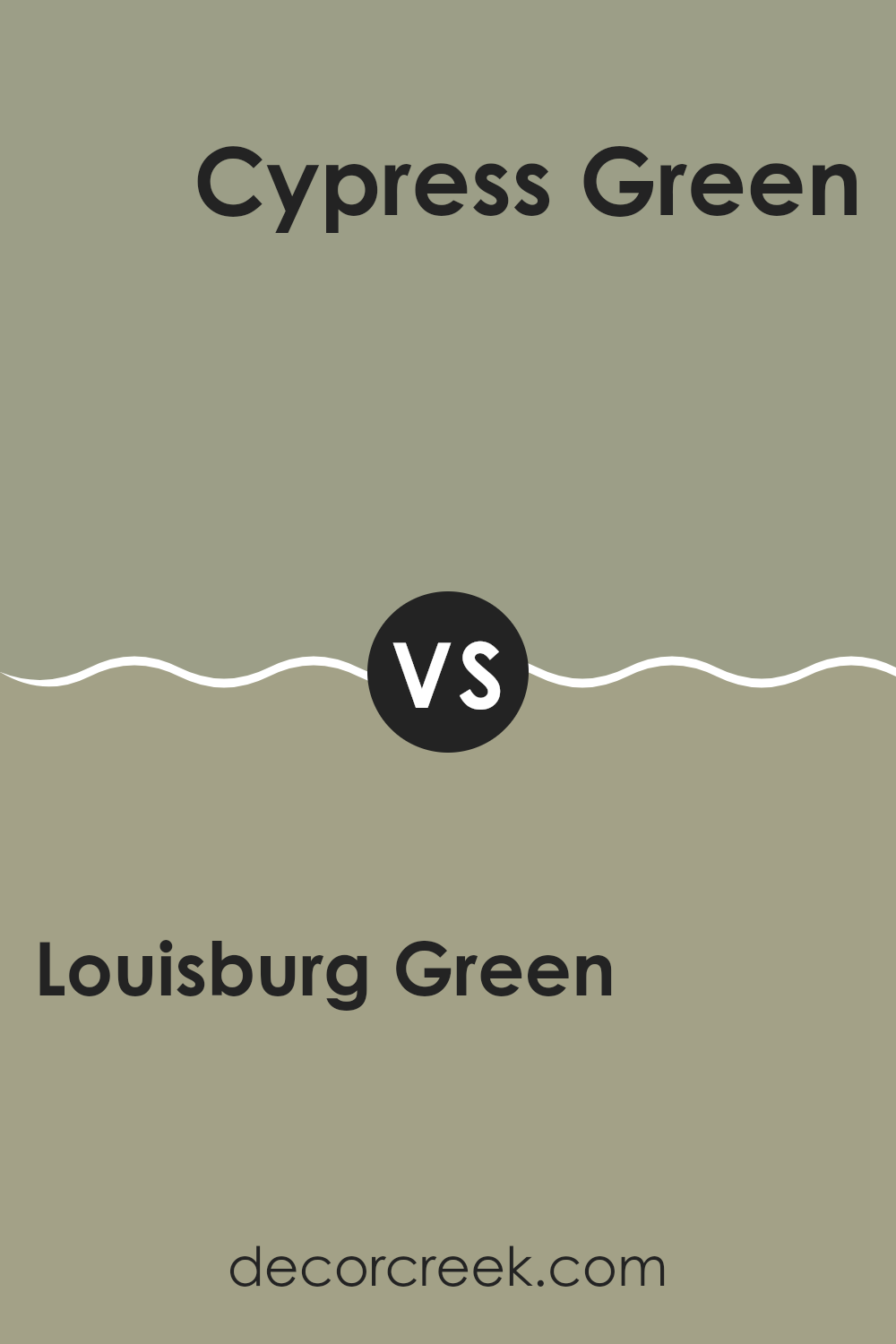
In wrapping up my thoughts on HC-113 Louisburg Green by Benjamin Moore, I must say that this paint color has truly impressed me with its unique charm. Louisburg Green isn’t just any green; it has a rich, deep quality that makes any room feel cozy and inviting. Whether used in a bedroom, living room, or even a kitchen, this color adds a touch of nature-inspired beauty without being too loud or bright.
One thing I absolutely love about Louisburg Green is how well it goes with different decorations and furniture styles. Whether you have old-fashioned wooden furniture or more modern pieces, this color complements them perfectly. It’s like having a bit of the outdoors right inside your home, which feels really nice.
Another great point about this color is that it stays beautiful all day long, under different kinds of light. It looks lovely in the bright sunlight of the morning and equally warm and welcoming by lamp light at night. That’s a big plus because it means you won’t get tired of the color depending on the time of day.
Overall, choosing HC-113 Louisburg Green by Benjamin Moore could be a wonderful decision if you’re thinking about changing up a room in your house. It’s a color that feels fresh, welcoming, and perfectly homely all at once. If you’re considering a new shade, I definitely think Louisburg Green is worth a try!
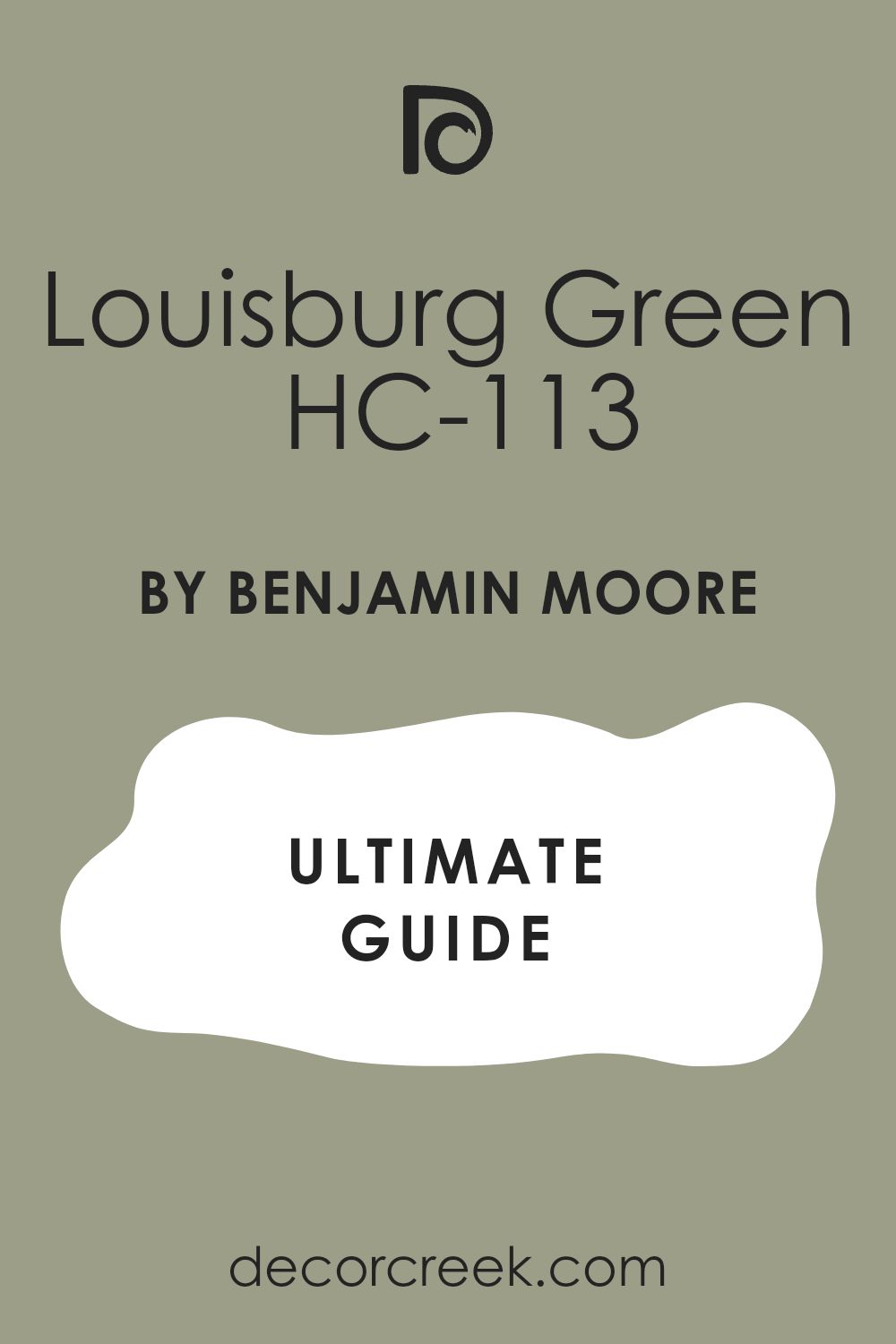
Ever wished paint sampling was as easy as sticking a sticker? Guess what? Now it is! Discover Samplize's unique Peel & Stick samples.
Get paint samples



